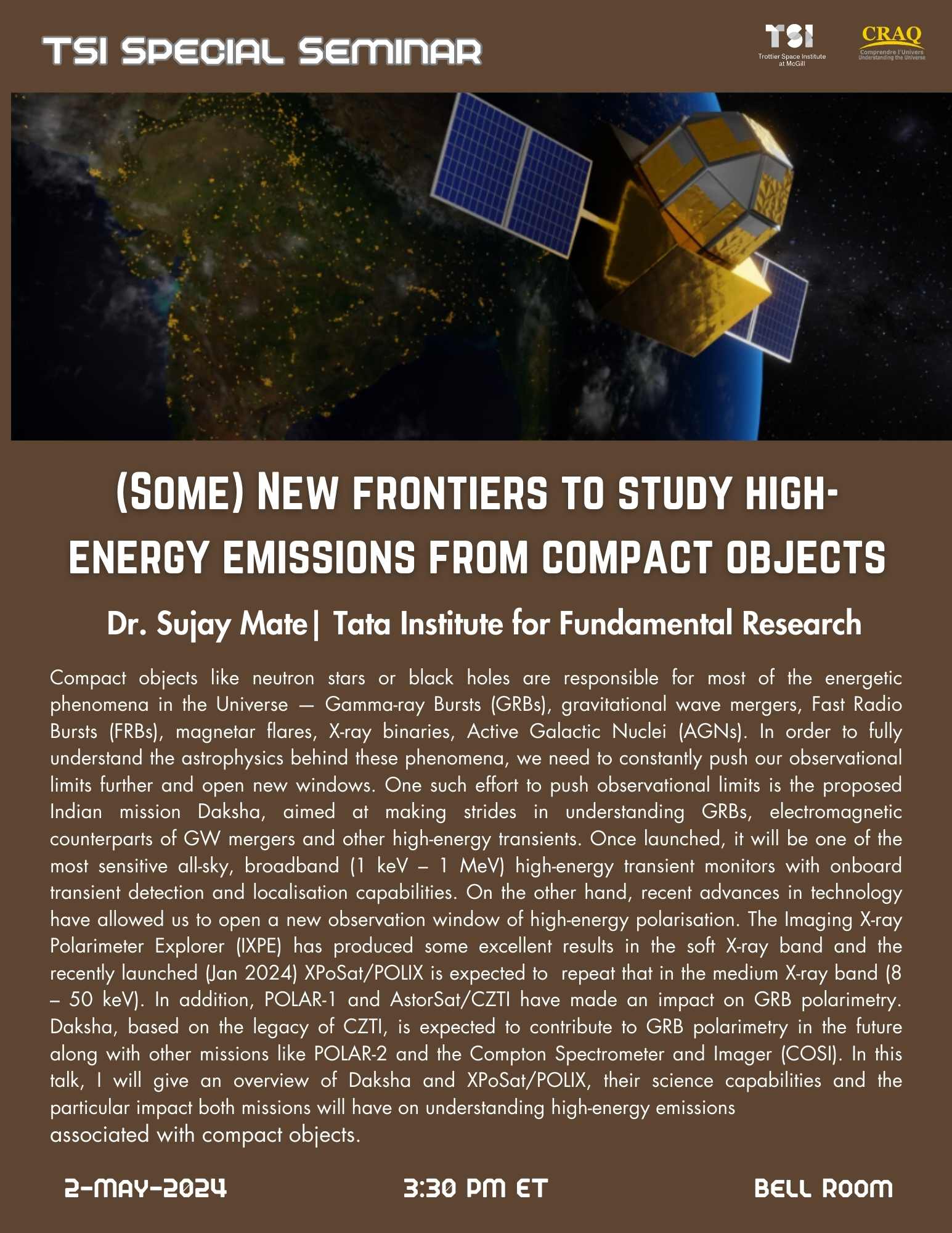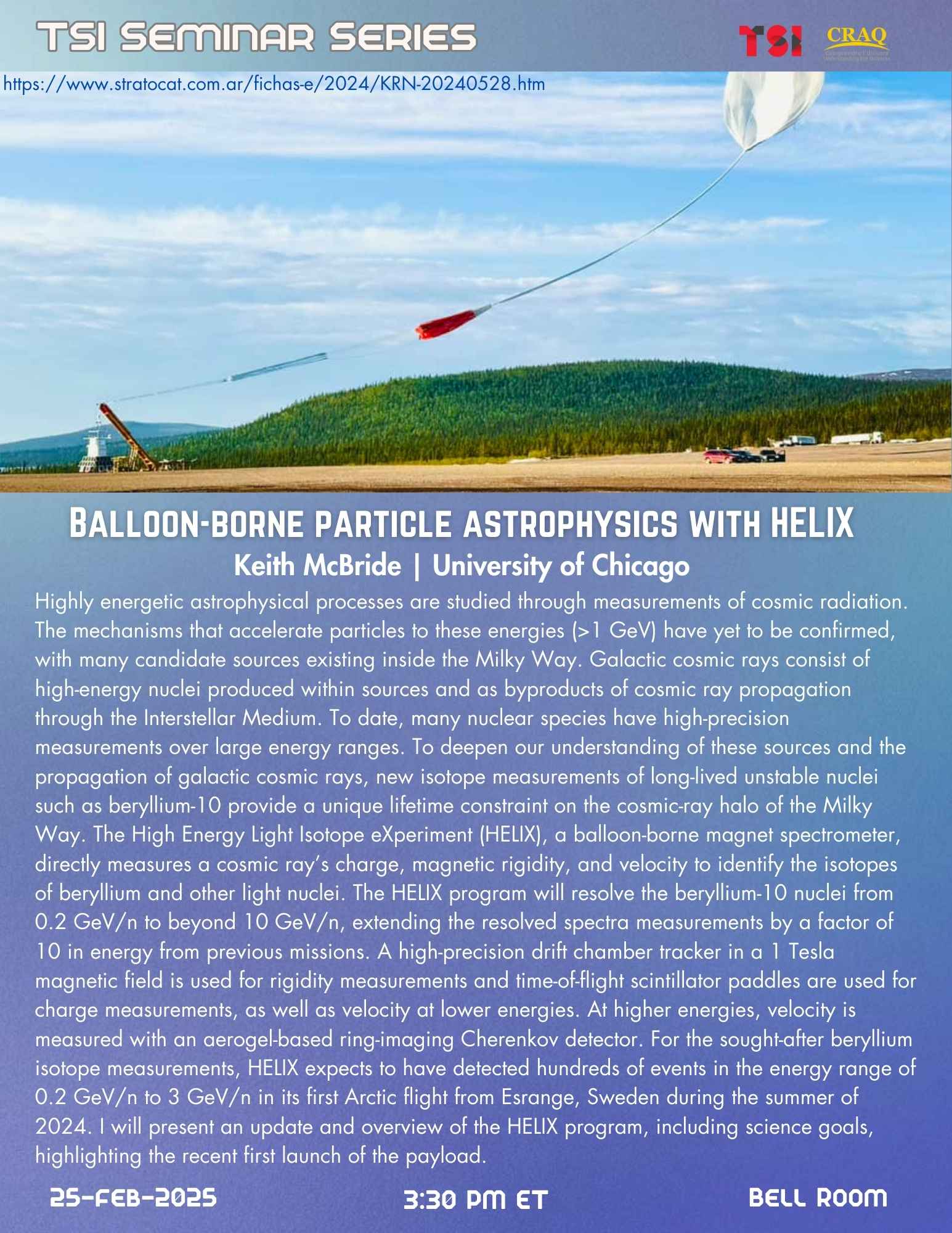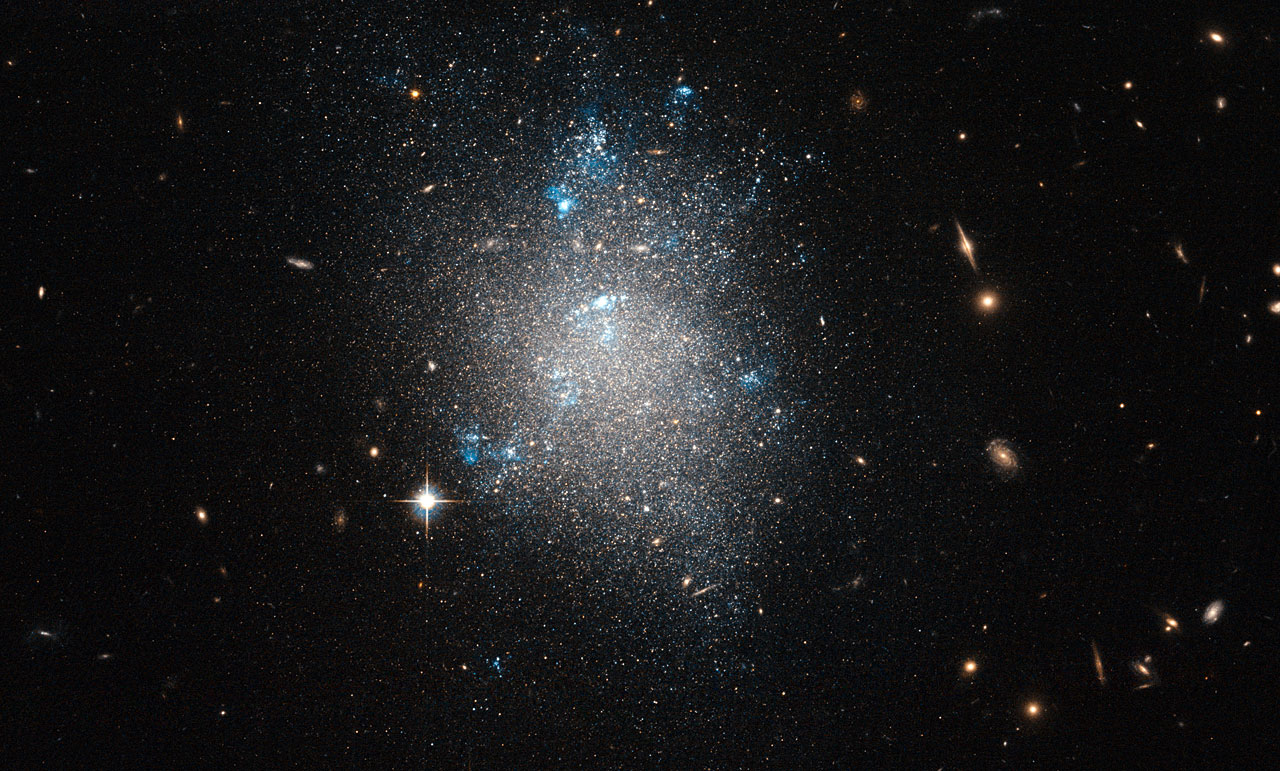(Some) New Frontiers to Study High-energy Emissions from Compact Objects
Dr. Sujay Mate
(Tata Institute for Fundamental Research)
May 2, 2024 3:30 PM
Location: Bell Room
Special Seminar
Compact objects like neutron stars or black holes are responsible for most of the energetic phenomena in the Universe — Gamma-ray Bursts (GRBs), gravitational wave mergers, Fast Radio Bursts (FRBs), magnetar flares, X-ray binaries, Active Galactic Nuclei (AGNs). In order to fully understand the astrophysics behind these phenomena, we need to constantly push our observational limits further and open new windows. One such effort to push observational limits is the proposed Indian mission Daksha, aimed at making strides in understanding GRBs, electromagnetic counterparts of GW mergers and other high-energy transients. Once launched, it will be one of the most sensitive all-sky, broadband (1 keV – 1 MeV) high-energy transient monitors with onboard transient detection and localisation capabilities. On the other hand, recent advances in technology have allowed us to open a new observation window of high-energy polarisation. The Imaging X-ray Polarimeter Explorer (IXPE) has produced some excellent results in the soft X-ray
band and the recently launched (Jan 2024) XPoSat/POLIX is expected to repeat that in the medium X-ray band (8 – 50 keV). In addition, POLAR-1 and AstorSat/CZTI have made an impact on GRB polarimetry. Daksha, based on the legacy of CZTI, is expected to contribute to GRB polarimetry in the future along with other missions like POLAR-2 and the Compton Spectrometer and Imager (COSI). In this talk, I will give an overview of Daksha and XPoSat/POLIX, their science capabilities and the particular impact both missions will have on understanding high-energy emissions associated with compact objects.




































